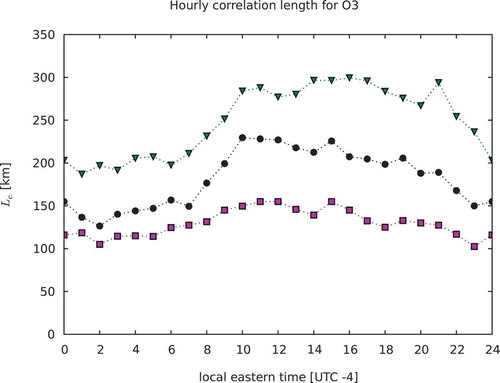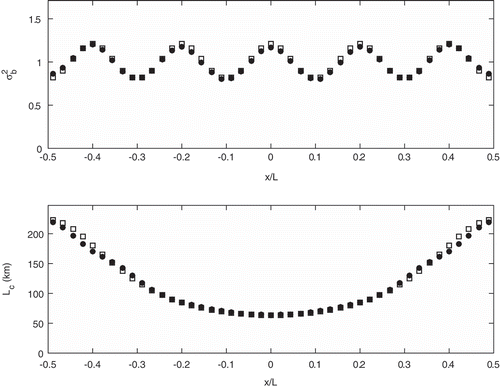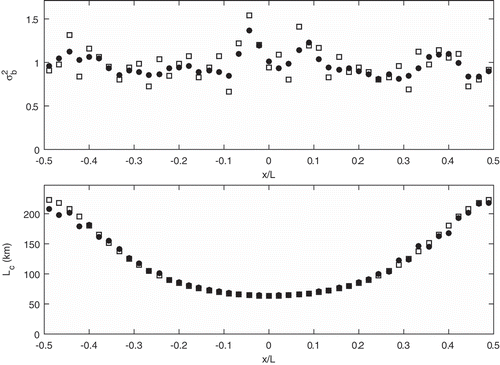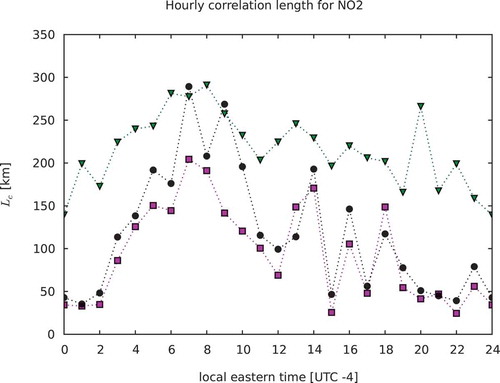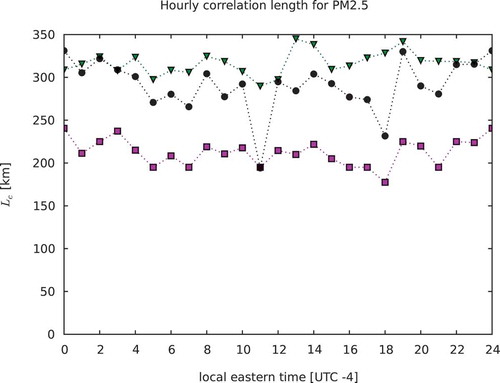Figures & data
Table 1. Terminology of data assimilation.
Figure 1. Typical operational product of the objective analysis for O3, June 15, 2014, 12 UTC. Upper left panel displays the model prior from GEM-MACH. The upper right panel is the analysis valid at the same time. The lower left panel is analysis increment, that is, the difference between the analysis and the model prior, and the lower right panel is the observations used to produce this analysis.
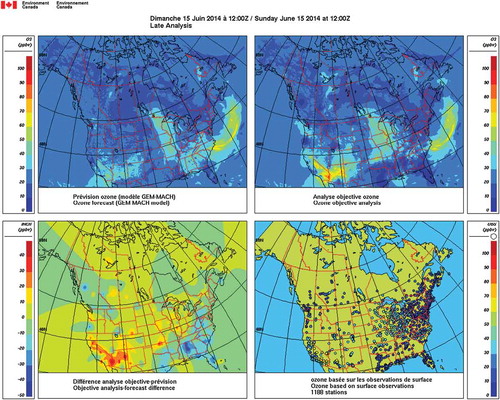
Figure 2. Correlation functions as a function of the (dimensionless) distance for common correlations models. The lower panel displays the distance dependence when the length-scale parameter of the individual models is set to unity. The upper panel shows the correlation functions when the length-scale parameter has been scaled to provide the same (unit) correlation length based on the Gaussian correlation model. Note that the solid black line (Gaussian) is identical in both panels. The vertical dashed line represents the distance at which the compact support correlation of Gaspari and Cohn is equal to zero.
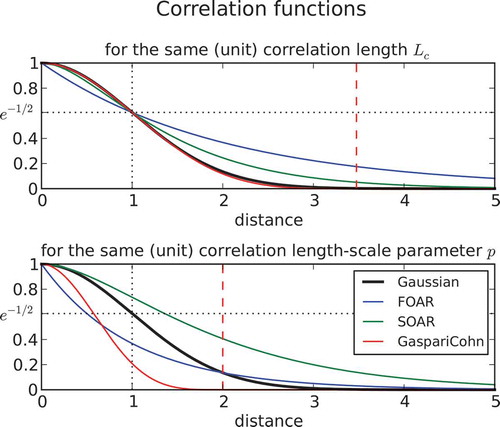
Figure 3. Example of a local Hollingsworth–Lönnberg fit of a Gaspari and Cohn correlation function for O3 around the station Toronto North (corner of Yonge and Finch avenues) for July 2014, 16 UTC. The lower panel shows the surrounding stations where innovations are collected, with concentric circles of 100 km apart (in light green). The upper panel shows the normalized autocovariance function as function of radial distance. The fitted correlation function is displayed with a solid black line.
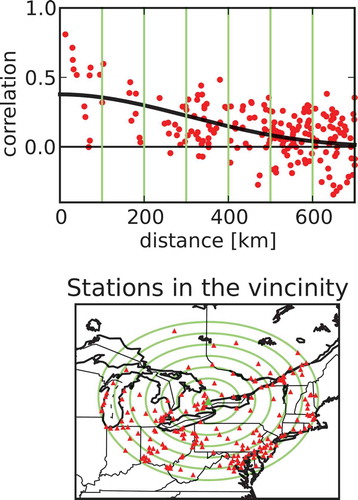
Figure 4. One-dimensional nonhomogeneous model. Left, coordinate transformation . Right, resulting nonhomogeneous correlation (with
, p = 0.11, Lc = 500 km in the displaced coordinate equation, eq 7). Contour isolines (0.2, 0.4, 0.6, 0.8, 1.0).
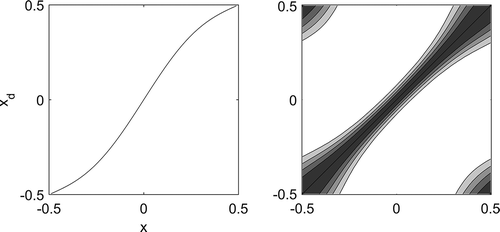
Figure 5. HL local estimates for and
. The true background error has an homogneous isotropic correlation and spatially varying variance (wavenumber 5). Squares are the true values, and filled circles are the HL estimates.
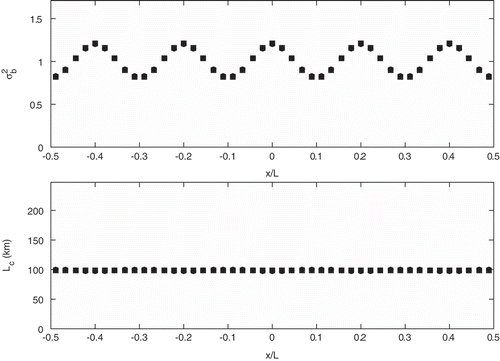
Figure 6. HL local estimates for and
. The true background error has a homogeneous isotropic correlation with a spatially uncorrelated (random) background error variance. Squares are the true values, and filled circles are the HL estimates.

Figure 9. Different correlation length estimates. Spatially random error variance with nonhomogeneous error correlation as in . Dotted-pink line represents the log-likelihood function, and in solid pink the minimum of the log-likelihood function. The mean HL local correlation length is in blue. The for different modeled correlation lengths (in abcissa) is represented with a solid black line. The ordinate are values of
.
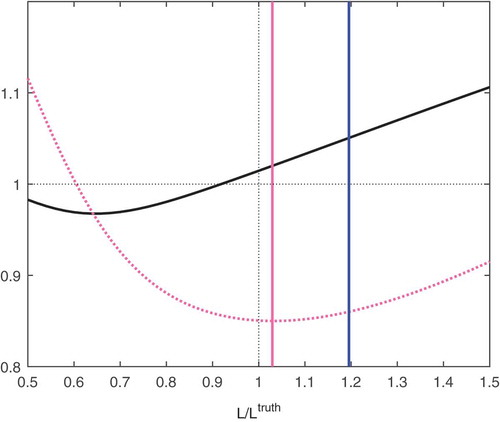
Figure 10. Distribution of the local Hollingsworth–Lönnberg correlation length estimates for O3, NO2, and PM2.5 using the filtered data at 16 UTC. The blue lines represent the median and the red line the mean value.
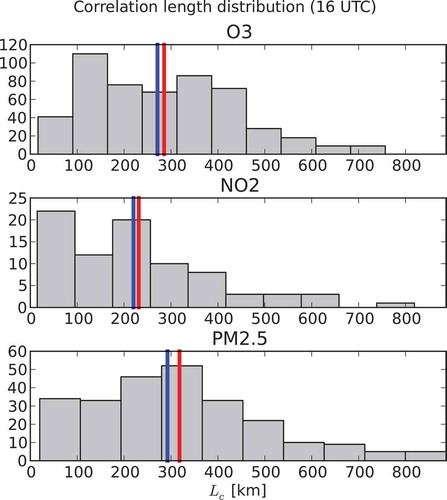
Table 2. Correlation length estimates (km) from different methods, July 2014, 16 UTC.
Figure 11. Comparison of different correlation length estimates for O3, NO2, and PM2.5 at 16 UTC for the summer 2014. in solid black, the log-likelihood function (rescaled) in dotted pink, the maximum likelihood estimate in solid pink, the global HL estimate in green, the median HL in blue, and the harmonic mean HL is in cyan.

Figure 12. Time evolution of the correlation length for O3. Maximum likelihood estimates in pink, estimates in black, and global HL in green.
